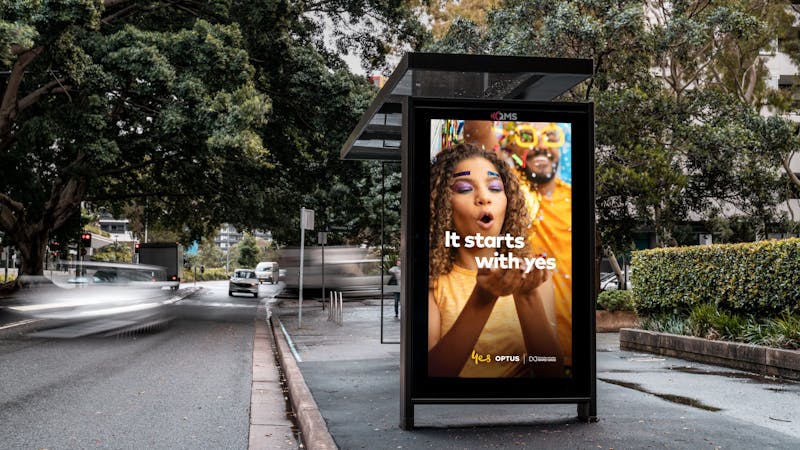Every marketer will tell you to follow the money. Well, right now, the money is with millennials.
Millennial shoppers, those between the ages of 18 and 35, are currently the most valuable demographic.
Wanna know why?
As of 2019, millennials are the largest demographic, possessing a whopping $600 billion in annual buying power.
By 2025, they will constitute nearly 75% of the U.S. workforce.
So if you’re following the money (and we hope you are), continue reading to learn how to sell to millennials.
Millennial Buying Persona
First, to ensure your marketing is on point to attract millennials, it’s important to understand who they are and how they differ from previous generations.
If you have not read Colormatics' article covering the difference between selling to millennials and selling to baby boomers, we suggest you start there.
Millennials cover a wide range, but there are some distinct characteristics to this buyer persona
- Range in age from 26 and 40 (born between 1981 and 1996)
- Are part of the “fastest growing, most diverse generation of consumers in the United States.”
- Are currently entering their wealth accumulation life phase
- Offer the “greatest lifetime value of any customer in the marketplace.”
- Are most likely to refer their friends when they have a good shopping or buying experience
The most important takeaway for digital advertisers is that millennials communicate, shop, and buy differently than any previous generation.
If you’re looking to reach a millennial audience, old school methods won’t work.
A reported 84% don’t trust traditional advertising according to a study reported on by HubSpot.
Learn more about the Millennial Buyer Persona.

Attracting Millennials
Millennials hate feeling “sold to.” It is important to think less of how to sell to millennials and more along the lines of how to attract millennials to your brand.
Follow these 5 actionable steps to gain trust and build relationships with your millennial target.
Offer Help
If you want to successfully market to millennials, you need to show them a solution to a problem they’re facing.
By tapping into the issues they’re facing, you can find a way to spin your product’s story or function to fit their needs.
Then by providing that help, you’ll build brand advocacy, so they rely on you as a solution.
Millennials value, well, value, so give them more than you’re asking for in return, and be transparent with your information (e.g. don’t hide it behind paywalls or email captures).
That transparency and trust will have them returning again and again.
Get social
As one of the most technologically savvy generations, social media is a place that millennials clock a lot of hours.
And you should be spending just as much time there, too.
By building a strong social media strategy, you’ll have an easier time connecting with the millennial buyer.
Take for example the use of micro-influencers.
As a tactic that’s become extremely prevalent in the space because micro-influencers take the truths we know about trusted referrals, and expand that reach to a wider audience.
So while a micro-influencer may not technically be a “friend,” they’ve already set expectations with their millennial audience, so you in turn, reap the benefits.

Make it visual
Millennials communicate differently than other generations. And as we can see with the rise of social media, the idea of beautiful branding has been disseminated beyond just an interest of brands themselves or designers.
Millennials want their products to look as good as they function. And are often making decisions based on the visual branding alone.
Millennials demand content that looks good. Images, online experiences, and the overall feel of a website’s presence needs to be optimized across devices in order to reflect well on the brand.

Say it with video
“Content” doesn’t, in this case, mean television or print advertising. By and large, millennials ignore these marketing channels, and instead view all of their marketing online.
Based on a recent survey, “among the respondents, 85% of millennial consumers report they’ve purchased a product or service after viewing a video.”
There are three key takeaways that highlight video as one of the most powerful forms of content:
- Memorable
And there’s the data to back it up. 21 percent of consumers overall and 29 percent of millennials find video more memorable than other forms of content, over display ads, email marketing, and especially something as dry and time consuming as a case study or all text ad. Video can engage and share your message quickly, in a way that not only entertains, but will stick with your audience.
- Engaging
Consumers opt for video more than any other form of content: 45 percent of consumers overall and 56 percent of millennials have said they feel that video is more engaging than any other type of content. Hands down.
- Preferred
Insights and data on brand and marketing communications is clear: 36 percent of consumers overall and 46 percent of millennials prefer video content to other forms of brand and marketing communication.

Support a Cause
Social issues are often a big consideration for millennials’ purchasing decisions. They’re typically more likely to avoid purchasing a product from a place whose values they don’t believe in.
Even further, an astonishing 50% of millennials are more willing to make a purchase from a company if that purchase supports a cause.
Partnerships with organizations that support social causes are also very effective.
A reported 90% of millennials are likely to switch from one brand to another if the second supports a cause—even if cost and quality of the two are the same.
Video Ad Success
We know that video is successful with a millennial audience because we’ve seen it work first hand.
Lemonade, a digital insurance company tasked us with creating a video for them to explain how their insurance has turned the old, stuffy model on its head, and completely disrupted the industry.
To tell the story of why millennials need insurance and how Lemonade fills that need we used an animated explainer video.
Explainer Video: Lemonade Insurance
This video was viewed more than 1.5 million times before Lemonade launched in the US and to date has been viewed more than 10 million times.
The video is often used to introduce Lemonade leadership at events and television appearances, and makes it clear why Lemonade is one of the top choices for tech-savvy millennials out there.
So, if you’re wondering how to market to millennials, keep in mind advertising to millennials is a completely different model than old school tv, radio and print ads.
Attracting millennial consumers means you have to offer help, get social, make it visual and chances are, if you’re not doing it with video, you’re not doing it right.
Web3 and Millennials
Selling to millennials in the crypto and Web 3.0 space requires a keen understanding of their unique characteristics, preferences, and values. As digital natives, millennials are well-versed in emerging technologies and at the forefront of adopting disruptive innovations. To effectively engage with this influential demographic, businesses need to focus on offering transparent, user-friendly platforms that emphasize accessibility and align with their core values, such as decentralization, security, and financial inclusivity. It is also crucial to utilize social media channels and influencers to communicate the benefits of crypto and Web 3.0 services while leveraging the power of community building. By creating a strong brand identity and fostering trust, businesses can successfully navigate the rapidly evolving landscape of cryptocurrency and Web 3.0, capturing the attention and loyalty of the millennial market.
Reaching Millennials with Programmatic Advertising
Programmatic advertising platforms have become increasingly popular in recent years due to their capacity to optimize advertising budgets, enhance targeting precision, and automate media buying processes. These platforms are especially effective when targeting specific demographics like millennials. Here's how to use programmatic advertising platforms to reach the millennial audience:
- Define Your Millennial Audience: First and foremost, understand who you are targeting. The millennial demographic is large and diverse, ranging from early twenties to late thirties. Interests, behaviors, and preferences can significantly vary within this group. For instance, some millennials may be more focused on starting a career, while others might be more interested in family life. Therefore, it's important to segment your millennial audience and create detailed buyer personas.
- Data Collection and Analysis: Programmatic platforms allow advertisers to collect and analyze data about users, making it possible to target ads more precisely. Gather data on browsing habits, interests, locations, device usage, social media activity, and other relevant factors to understand your millennial audience better. Use this data to create effective advertising campaigns that appeal specifically to them.
- Mobile and Social Media Advertising: Millennials are tech-savvy and spend a significant amount of time on their smartphones and social media platforms. Capitalize on this by focusing on mobile-friendly ads and taking advantage of programmatic ad platforms that cater to social media like Facebook Ads, Instagram Ads, Snapchat Ads, etc.
- Video and Native Advertising: Millennials are more likely to engage with video content and native ads than traditional forms of advertising. Platforms that offer programmatic video and native advertising can be highly effective in reaching this demographic.
- Personalization and Relevance: Millennials value authenticity and personalization. They're more likely to engage with ads that are relevant to their interests and personalized to their needs. Programmatic platforms offer advanced targeting features that make this possible.
- Real-time Bidding (RTB): This is a feature of programmatic buying where advertising inventory is bought and sold on a per-impression basis in real-time. It's highly efficient and can be particularly effective in targeting millennials.
- Brand Safety and Transparency: Millennials tend to value brands that are transparent and socially responsible. Programmatic platforms can help ensure your ads only appear in contexts that align with your brand values.
- A/B Testing and Optimization: Programmatic platforms allow for ongoing testing and optimization. By testing different ad formats, creative, and messaging, you can see what resonates most with your millennial audience and continuously improve your campaigns based on data-driven insights.
Remember, it's essential to monitor the performance of your advertising campaigns and adjust your strategies as needed to optimize results. With thoughtful planning and execution, programmatic advertising platforms can be a powerful tool in reaching the millennial audience.


